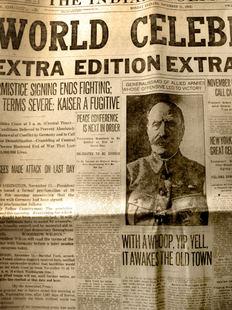
There is a long history of people in photojournalism. Some are more memorable than others, but all have made an impact in the field.
About Photojournalism
Photojournalism relies on images to help tell stories. In order for a photojournalist to be successful at his job, his pictures must fairly and accurately represent a particular news event. In addition, a photojournalist's images must enhance the context of a particular news story. Finally, photojournalists are tasked with the job of snapping photos that make facts relatable to viewers and readers around the world.
History of People in Photojournalism
The practice of illustrating news stories with photographs began in the mid 1800s. Back then, printing presses could only publish from engravings. It wasn't until about 1880 that news photographs no longer required photos be re-interpreted by an engraver before they could be published.
Examining the history of people in photojournalism from the 1800s until today provides a unique perspective on how much the genre has evolved. Some of the most influential photojournalists include:
Carol Szathmari (1812-1887)
This Romanian photographer is considered the world's first photojournalist. His pictures of the Crimean War (between Russia and Turkey from 1853 to 1856) were published in Europe and provided the first glimpses of what really transpires on the front lines during battle. Szathmari's newsworthy photographs were exhibited in European galleries for the world to view and were later copied in limited numbers and distributed globally.
Mathew B. Brady (1822-1896)
Mathew Brady's documentation of the Civil War earned him a place in photojournalism history. The celebrated 19th century American photographer brought his photo studio right on the battlefields. Some of his most memorable shots were taken at the First Battle of Bull Run, in which Brady reportedly got so close to the action that he was almost captured by the enemy.
Brady also took his traveling darkroom to the Battle of Antietam where he documented the travesties of war, including graphic photographs of corpses. Brady's images provided many Americans with their first view of the realities of war in photographs versus "artists' impressions." The thousands of photos Brady took during these bloody battles are considered the most important visual documentation of the Civil War.
Jacob August Riis (1849-1914)
The talented Danish photographer is credited with employing his photographic and journalistic talents to help the poorest of the poor. New York City's slums and their impoverished residents were the subject of Riis' most prolific images. What's more, they also became the first subjects lit by a new type of flash Riis used on his box cameras. As a police reporter for a local newspaper, Riis worked in New York's most crime-ridden and impoverished slums in the dark of night. The elements were not conducive to stellar photography, so Riis used a type of flash made from magnesium powder that would ignite behind the camera's lens cap. This added light allowed him to penetrate the dark streets of New York and capture shocking images of the city's poor.
Margaret Bourke-White (1904-1971)
Margaret Bourke-White made history when she became the world's first female war correspondent. The American photojournalist worked for Fortune and Life magazines covering combat zones in Germany, Africa and Italy during World War II. Bourke-White was also the only American photographer in Russia during the battle of Moscow. In addition, she photographed the drought victims of the Dust Bowl, the survivors at Buchenwald concentration camp, and Gandhi a few hours before his assassination. She is considered a legend in the field of photojournalism and her award-winning images can be seen in museums around the world.
Henri Cartier-Bresson (1908-2004)
Henri Cartier-Bresson is credited with being the father of modern photojournalism. The French photojournalist was the master of candid photography and helped develop "street photography" or "real life reporting," which records minute human details. Cartier-Bresson's style of photography has shaped generations of modern day photojournalists. His work, most notably his unprecedented images of world leaders, has yet to be surpassed.







